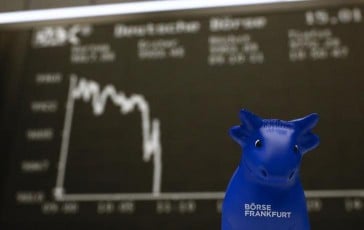European stocks edge lower; French industrial production impresses
 © Reuters. EUR/USD +0.07% Add to/Remove from Watchlist Add to Watchlist Add Position
© Reuters. EUR/USD +0.07% Add to/Remove from Watchlist Add to Watchlist Add Position
Position added successfully to:
+ Add another position Close UK100 -0.23% Add to/Remove from Watchlist Add to Watchlist Add Position
Position added successfully to:
+ Add another position Close FCHI +0.04% Add to/Remove from Watchlist Add to Watchlist Add Position
Position added successfully to:
+ Add another position Close DE40 +0.01% Add to/Remove from Watchlist Add to Watchlist Add Position
Position added successfully to:
+ Add another position Close SBRY -4.51% Add to/Remove from Watchlist Add to Watchlist Add Position
Position added successfully to:
+ Add another position Close GRG +7.19% Add to/Remove from Watchlist Add to Watchlist Add Position
Position added successfully to:
+ Add another position Close Gold +0.30% Add to/Remove from Watchlist Add to Watchlist Add Position
Position added successfully to:
+ Add another position Close LCO +0.03% Add to/Remove from Watchlist Add to Watchlist Add Position
Position added successfully to:
+ Add another position Close CL +0.10% Add to/Remove from Watchlist Add to Watchlist Add Position
Position added successfully to:
+ Add another position Close TSM -0.34% Add to/Remove from Watchlist Add to Watchlist Add Position
Position added successfully to:
Investing.com - European stock markets edged largely lower Wednesday amid caution ahead of key U.S. inflation data, even after the release of better-than-expected French industrial production.
+ Add another position Close
At 03:25 ET (08:25 GMT), the DAX index in Germany traded largely flat, the CAC 40 in France traded down 0.1% and the FTSE 100 in the U.K. fell 0.2%.
French industrial production grows strongly
Data released earlier Wednesday showed that French industrial production rose 0.5% on the month in November, more than expected.
However, this followed on from the equivalent data from Germany, released on Tuesday, falling on a month-on-month basis for the sixth month in a row, as the eurozone’s largest economy continued to struggle in the face of high energy prices and elevated interest rates.
Additionally, German construction spending is set to fall in 2024 for the first time since the financial crisis, according to a study by the DIW economic institute, as the property industry suffers its worst crisis in decades.
Stock markets rose sharply towards the end of last year on hopes that global central banks would start cutting interest rates early in 2024.
However, inflation in the eurozone rose to 2.9% in December, reversing six months of consecutive falls, creating doubt as to when the European Central Bank would move lower.
Elsewhere, Australian inflation took a further move lower, which brings Thursday's U.S. consumer prices in focus, where a slowdown is also anticipated and needed to avoid a sharp selloff given a series of U.S. rate cuts are priced in for this year.
A speech by New York Fed President John Williams will also be studied carefully, as the influential policy maker has been on the hawkish side of the rate cut debate.
J Sainsbury maintains full-year profit guidance
In the corporate sector, J Sainsbury (LON:SBRY) stock fell 3.5% after the U.K.’s second-largest supermarket chain maintained its profit guidance for the financial year even after posting a sharp rise in grocery sales over the important festive period.
This follows sales of general merchandise falling during the period, with Christmas clothing sales falling 6%.
By contrast, Greggs (LON:GRG) stock soared around 10% after the U.K. bakery chain declared that inflation pressures are “reducing”, as it reported a strong rise in sales last year.
The chip sector will also be in focus Wednesday, after TSMC (NYSE:TSM), the world’s largest contract chipmaker, reported largely flat fourth-quarter revenue, but that still beat both the company's and market's expectations.
Crude edges higher after strong API draw
Oil prices edged higher Wednesday, extending the recent rebound as Middle East supply disruptions persisted while industry data pointed to mixed U.S. inventories.
By 03:25 ET, the U.S. crude futures traded 0.2% higher at $72.35 a barrel, while the Brent contract climbed 0.1% to $77.70 a barrel.
Both crude benchmarks have rebounded after a weak start to the week, when top exporter Saudi Arabia cut export prices, on worries that markets will tighten due to disruptions in Middle Eastern supply, as the Israel-Hamas war raged on and as Libya suspended output at its biggest oilfield.
Data from the American Petroleum Institute, released late Tuesday, showed that U.S. crude stockpiles fell by a larger-than-expected 5.2 million barrels in the week to January 5.
But the API data also showed another week of strong builds in gasoline and distillates inventories, raising doubts over demand from the world’s largest fuel consumer. These numbers could have been exacerbated by a massive winter storm battering several parts of the country, further limiting road travel.
Additionally, gold futures rose 0.3% to $2,039.30/oz, while EUR/USD traded 0.1% higher at 1.0939.
European stocks edge lower; French industrial production impresses 1

